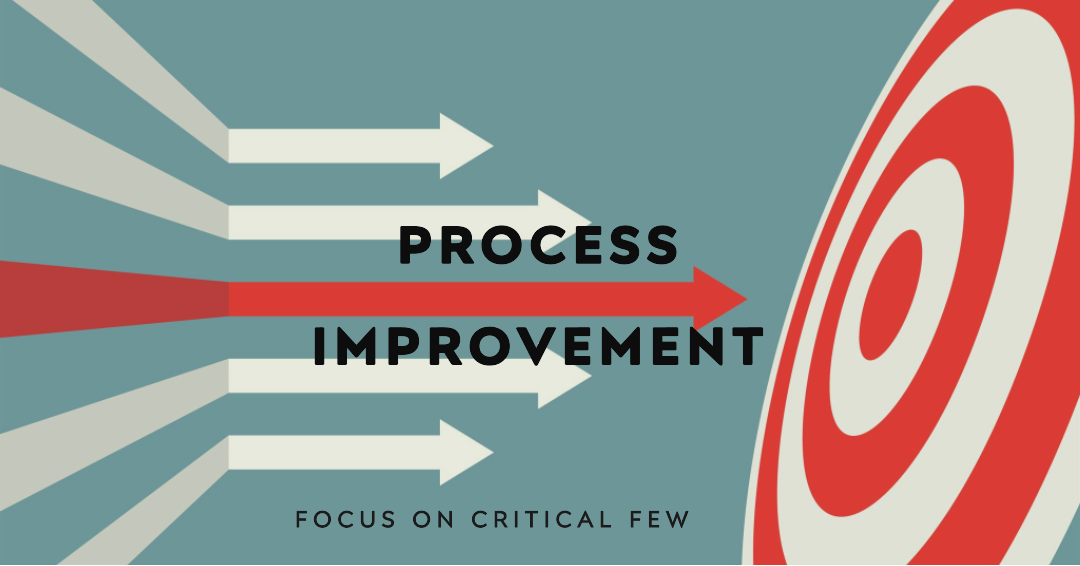7 Ways Small Businesses Can Use The Pareto Principle To Drive Growth
Learn how the Pareto Principle can help small businesses focus on what really drives growth and boosts revenue. Discover 7 practical ways to apply the 80/20 rule to your business today.

Implementing the Pareto Principle in small business is like a soccer player using few strategic passes to score a goal instead of making many scattered moves on the field.
Small business owners are accustomed to being stretched thin, as they must juggle multiple responsibilities including:
- supervising daily operations
- marketing their services/products
- fulfilling customer expectations.
Yet with limited time and resources at hand, applying the Pareto Principle can streamline efforts and channel energy into making the biggest impact.

What is the Pareto Principle
The principle suggests that 80% of your results come from 20% of your efforts ("vital few"), so by identifying and focusing your efforts on that 20% you can maximize your productivity and drive more significant growth and profitability.
This principle was named after the Italian economist Vilfredo Pareto who discovered that approximately 80% of the land in Italy was owned by 20% of the population. Hence, the Pareto principle originates from the observation that things in life are not always distributed evenly.
The Pareto principle can also be applied in computing, where it can be used to optimize efforts. For example, Microsoft noted that by fixing the top 20% of the most-reported bugs, 80% of the related errors and crashes in a given system would be eliminated.
Conversely, the hardest 20% of the code takes 80% of the time.
The principle is sometimes used in quality control, where it serves as a baseline for ABC/XYZ-analysis in logistics and procurement for the purpose of optimizing the stock of goods, as well as the costs of keeping and replenishing that stock.
Though the Pareto Principle is not a law but merely an observation, it can be widely applied on a personal level.
Time management is the most common use of the Pareto Principle. In terms of personal time management, 80% of your work-related output could come from only 20% of your time at work.
When applied to marketing, it can prompt businesses to think about where they should put their focus, such as on the main customer segments, most popular products, and the biggest causes of customer dissatisfaction.
Though its positivity to a company's growth and profits is of significant value, in the small business environment, the Pareto Principle application can sometimes be hidden right in plain sight.
In this post, we’ll explore seven ways how small businesses can use the Pareto Principle to streamline their core business functions, optimize their resources, and drive growth.
Product Sales

How it works: By identifying which products are generating the majority of sales, business owners can focus their marketing and stock management efforts on promoting and optimizing sales of those items.
One sure way to apply the Pareto Principle in small businesses is to analyze business performance to see which products or services are selling and which are not.
For instance, the 80/20 rule might inform businesses that a fifth of their supplies is eating away at 80% of their budget.
It helps businesses to look deeper and consider the cost-effectiveness of their sales performance. Now, businesses can focus on those 'magic 20%' that are directly linked to outcomes that:
- drive sales
- ignite revenue and growth.
Businesses can also use the Pareto principle to identify aspects of their business, sales strategy, and particular campaigns that aren’t performing at their full potential. Doing so enables businesses to redirect funds, time, and manpower where they’ll do the most good.
Thus, applying the Pareto Principle to the optimization of product sales can stabilize the imbalance of outcomes.
Employee Productivity

How it works: By identifying top-performing employees who deliver the best results with the least amount of supervision, business owners can work with them to develop best practices and coach other team members.
The application of the Pareto Principle can offer a solution to improve the work routine for employees who begin their day overloaded with email threads and messages from both professional and personal domains.
By focusing on the 20% of their workload that yields 80% of their productivity, employees can prioritize their tasks and streamline their workflow.
This approach switches from a 'more-is-better' mentality to quality over quantity and helps:
- reduce the overwhelming feelings that come with an overflowing inbox
- enable workers to manage their energy more efficiently.
Customer Acquisition

How it works: By identifying which marketing channels generate the highest-quality and highest-converting leads, small business owners can focus their efforts on those channels instead of scattering their resources everywhere.
The Pareto Principle, when applied to customer acquisition, helps companies identify the key areas that bring the most significant benefit to business operations critical for overall business growth related to:
- profit maximization
- resource allocation
- developing and implementing acquisition solutions.
By doing a cost-benefit analysis of its customer acquisition strategy, a company can identify the customers that can bring in a higher profit through a quality improvement process.
Designating the "critical few" customers allows businesses to direct their resources toward business upscaling by using a wider spectrum of acquisition tactics.
Time Management

How it works: By analyzing which tasks and activities take up the majority of work time, small business owners can encourage their teams to focus on the most productive and profitable activities while delegating non-essential tasks to save time and resources.
It is easy to imagine that a wrongly allocated-induced time loss has a disproportionate impact on employee productivity and cause:
- increased stress and lower morale
- lower job satisfaction and burnout
- eroded business culture.
In this case, the Pareto principle can enhance the team's psychological safety and encourage individual employees to prioritize their tasks better, manage their time more effectively, and produce optimal results. For example, employees can focus on the imperative 20% of tasks that produce 80% of the results.
Using Time Tracking to Apply the Pareto Principle
Why it is important: By using time tracking in conjunction with Pareto Principle, small business owners can effectively grow and streamline their businesses for maximum success.
Time tracking can help small business owners identify which clients or projects are generating the most revenue in terms of time allocation and consumption, determine the strategies backed up with metrics and focus on their implementation, and, thus, cut losses to the minimum.
Inventory Management

How it works: By analyzing which products in the inventory are generating the most profits, small business owners can use that information to invest in and stock up on those products while reducing inventory for lower-performing items.
The inefficiency in managing your company's inventory strikes at the core of your capacity to establish and meet the necessary levels of profitability.
The Pareto Principle can be helpful: by analyzing sales data and identifying the top 20% of products that generate 80% of the revenue, inventory managers can focus on ensuring that those products are always in stock and keep a higher volume of stock of those goods to meet the customer demand.
Besides, applying the Pareto Principle can help identify inventory-related problems such as excess stock levels, dead stock, or slow-moving inventory. With the application of the 80/20 rule, inventory managers can identify those items that are not selling as well and take decisions such as marking down not to take up valuable warehouse space or discontinuing the items.
Also, the Pareto Principle can help inventory managers optimize their inventory levels and reduce holding costs. By focusing on the top 20% of products that generate 80% of the revenue, they can minimize overall inventory holding costs and free up capital for investment in other aspects leading to overall profitability.
Customer Service

How it works: By focusing on the 20% of the most valuable customers who generate 80% of the business, small business owners can create personalized experiences that encourage customers to return and promote business to others.
Small businesses can use data analytics to evaluate customer service metrics and identify those issues or functionalities that are not running smoothly and resulting in higher customer complaints and dissatisfaction.
By improving these vital features and addressing those issues, small businesses can fix the root cause of the problem, enhance their user experience, and gain a competitive advantage.
Process Improvement

How it works: By identifying where 80% of challenges lie, small business owners can focus their efforts there: in particular, by studying and optimizing the supply chain or improving customer feedback mechanisms in the areas that matter the most.
It's not uncommon that a typical work day consists of constant interruptions that can derail periods of concentration and productivity while searching for essential information across multiple platforms leads to wasted time and energy drain.
By implementing the Pareto Principle, small businesses can efficiently manage information flow and upgrade their operations. This approach identifies essential data and prioritizes actions based on a likely impact.
As a result, businesses reduce low-value activities, duplicate messages, conflicting instructions, and laborious exchanges. By minimizing these distractions, companies mitigate the adverse effects of excessive information consumption, which drains business productivity.
Another way is to use the Pareto principle to identify and fix problems strategically.
Small businesses can analyze their operations and identify the 20% of causes that are responsible for 80% of problems or errors. By addressing these vital few causes, small businesses can improve their quality and efficiency and reduce their costs and waste.
Takeaways

- The Pareto Principle is a fundamental concept that has significant implications for both individuals and organizations alike. It highlights the fact that most outcomes tend to follow an unequal distribution curve, meaning that a minority of inputs usually lead to the bulk of outputs.
- Applying the Pareto Principle leads to optimizing small business operations to drive growth and improve profitability and making better decisions about how we allocate our resources.
- By applying the principle to critical areas such as product sales, customer acquisition, time management, employee productivity, inventory management, customer service, and process improvement, you can identify the 20% of your efforts that generate the majority of your results.
- In essence, it helps us to become more effective by doing less and accomplishing more with limited effort. With the Pareto Principle guiding small business decisions, entrepreneurs can increase their chances of achieving sustainable financial success.
- Yet, it's important to remember that this principle is not a one-time fix, but a continuous process of optimization and adjustment.
How can the Pareto Principle be applied to increase small business profitability?
- Identify the top 20% of your clients who generate 80% of your revenue
- Focus on providing exceptional service to these clients
- Analyze the products or services that generate the most revenue
- Optimize your resources to maximize output for these products or services
- Consider eliminating services or products that don't align with the Pareto Principle to free up resources for more profitable areas
- Continuously monitor and adjust your strategy to maintain focus on the 20% of clients and products that drive the majority of your revenue.

